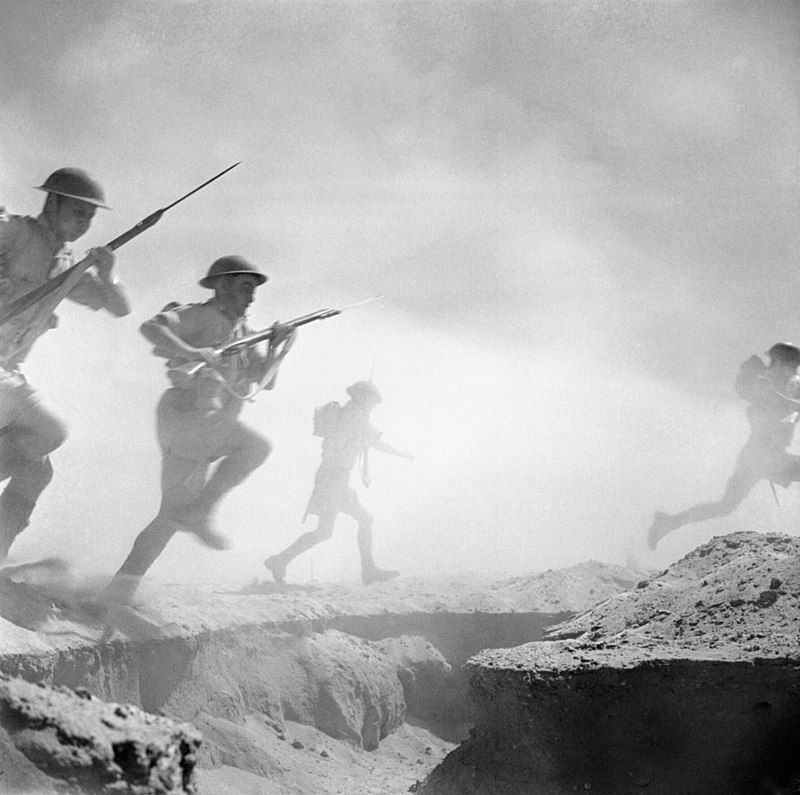
The Eighth Army was one of the most celebrated and successful Allied formations during World War II, playing a pivotal role in campaigns across North Africa and Italy. Composed primarily of British Commonwealth forces, the Eighth Army earned a reputation for resilience, adaptability, and operational flexibility under the leadership of prominent commanders such as Bernard Montgomery and Harold Alexander.
Formation and Early Campaigns
The Eighth Army was officially formed in September 1941 under the command of Lieutenant-General Alan Cunningham, bringing together British, Commonwealth (including Australian, New Zealand, Indian, and South African), and Allied forces. Initially stationed in Egypt, the Eighth Army’s primary objective was to defend British-held territories in North Africa and counter Axis forces led by Field Marshal Erwin Rommel, the “Desert Fox.”
In November 1941, the Eighth Army launched Operation Crusader, a major offensive aimed at relieving the besieged port of Tobruk and driving Axis forces back into Libya. Despite initial setbacks, the operation ultimately succeeded in achieving its objectives, marking the beginning of a series of engagements that would define the Eighth Army’s reputation.
Battles of El Alamein
The pivotal moment for the Eighth Army came during the battles of El Alamein. The First Battle of El Alamein (July 1942) and the Second Battle of El Alamein (October-November 1942) were decisive engagements that halted Rommel’s advance towards Egypt and reversed the tide of Axis fortunes in North Africa.
Under the command of General Bernard Montgomery, who took over from Cunningham in August 1942, the Eighth Army meticulously planned and executed the Second Battle of El Alamein. Utilizing superior firepower, combined arms tactics, and extensive preparations, Montgomery’s forces decisively defeated Rommel’s Afrika Korps. The battle marked a turning point in the North African campaign, securing Allied control of Egypt and laying the groundwork for the Allied invasion of Italian-held territories.
Campaign in Italy
Following the success in North Africa, the Eighth Army was transferred to the Italian front, where it continued to play a crucial role in Allied operations against German and Italian forces. The campaign in Italy was characterized by difficult terrain, harsh weather conditions, and determined enemy resistance.
Eighth Army’s amphibious landings at Salerno in September 1943 marked the beginning of the Italian campaign. Despite initial setbacks, including heavy German counterattacks, the Eighth Army under Lieutenant-General Mark Clark’s command eventually pushed northwards, capturing Rome in June 1944.
Legacy and Impact
The Eighth Army’s achievements during World War II are a testament to the effectiveness of combined arms operations, strategic planning, and the resilience of its multinational forces. Its successes in North Africa and Italy contributed significantly to the overall Allied war effort, drawing Axis forces away from other theaters of war and ultimately leading to the defeat of Nazi Germany and Fascist Italy.
The legacy of the Eighth Army continues to resonate within the British Commonwealth and Allied military traditions. The campaign in North Africa, particularly the battles of El Alamein, remains a defining moment in British military history, symbolizing the Allies’ ability to turn the tide against formidable Axis adversaries.
In conclusion, the Eighth Army’s role during World War II exemplifies the spirit of multinational cooperation, determination, and adaptability in the face of adversity. Its campaigns across North Africa and Italy not only secured Allied victories but also underscored the importance of strategic planning and operational coordination in achieving military success on the battlefield.